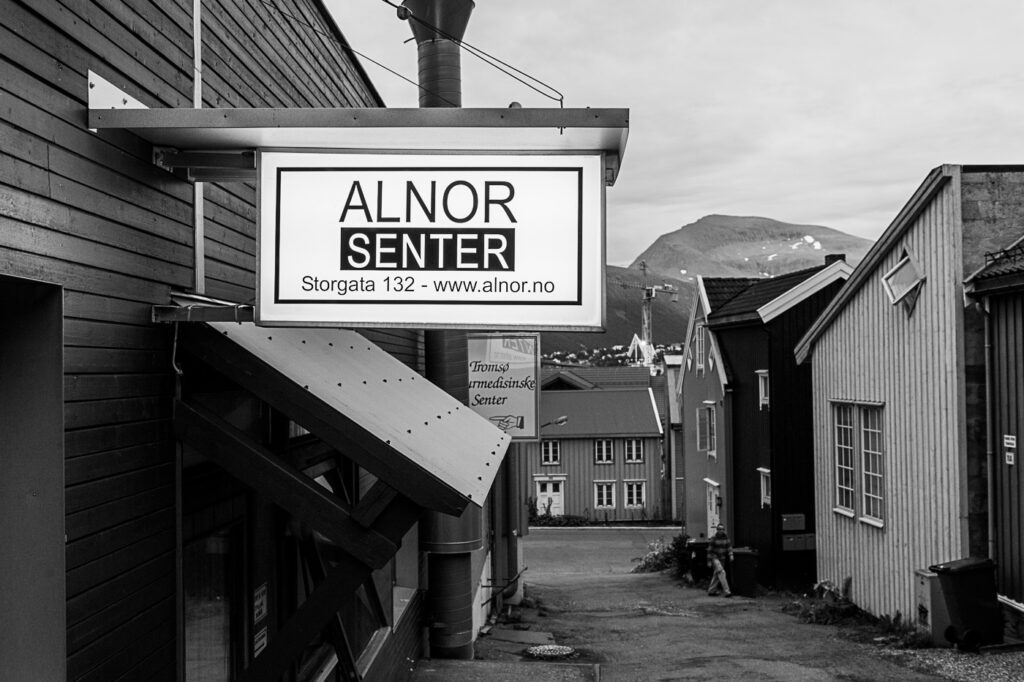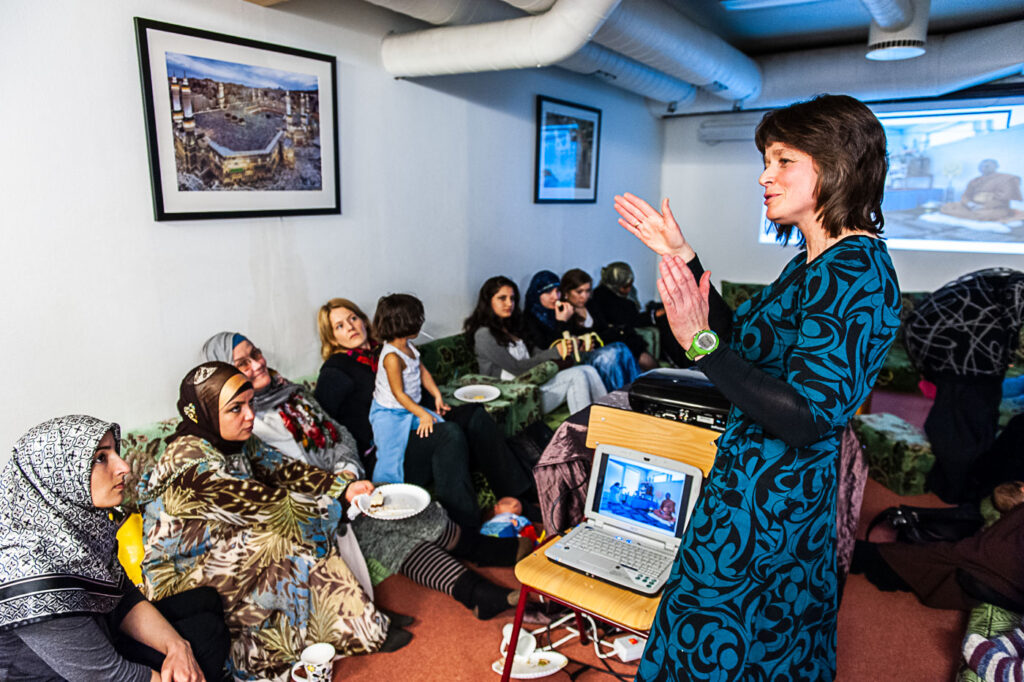From 2011 to 2014, Perspektivet Museum documented religious life in Tromsø – its most comprehensive documentation project thus-far. The impetus for the work was the observation that religion, to an increasing extent, is part of public debate, yet often discussed within a geo-political framework that focuses on conflicts and disagreements.
There seems to be little discussion of practice, fellowship and what it means to live as a religious person. In our research, we chose to focus on ‘everyday religiosity’ in northern Norway.
A central part of the initial phase was to gain an overview of the city’s religious buildings, and indeed, a number of churches stood out as landmarks in the urban setting. Most of these, for instance Tromsdalen Church (The Arctic Cathedral) and Tromsø Cathedral, attested to a Lutheran city. But the picture was equivocal, for there was an old Catholic church next to the city square and a number of highly visible non-state churches in the centre of town.




Exceptional diverse
The immediate picture told us something about ‘the religious city’ but certainly not everything. For behind anonymous facades, inside commercial premises, former private homes and sports halls, we found a welter of new ritual spaces. Tromsø’s religious life proved to be exceptionally diverse, but to make the project manageable in relation to the museum’s available resources, we chose to focus on eight religious communities. These were not chosen based on the number of members they had or how long they had existed in the city, but on a desire to show diversity and variation, both between religions and within Christianity.
The communities are Grønnåsen Church, the Firstborn Læstadians, Jesuskirka, the Russian Orthodox Church, the Church of Our Lady with the St. Elisabeth Sisters and the Carmelite Nuns, Alnor Mosque, the Bahai Community and the Thai Buddhist Community. In addition, we followed the doings of an ecumenical initiative – Sammen i lovsang og bønn for Tromsø (Together in Songs of Praise and Prayer for Tromsø) – and certain individuals with or without connections to a religious community.






Religious life
We started out viewing the city’s religious life from the outside, making note of the practical exercise of faith and variations between the religious communities. We noticed dress codes, how rooms were organised and furnished with art and symbols, and we registered how the different soundscapes characterised each community. Also fascinating were the ways in which communities adapted to the special climate of a small Arctic city. These first impressions tempted us to categorise and order the communities in a certain way, but face-to-face conversations with individual members soon resulted in a more nuanced understanding.
Relations to God
A total of 40 qualitative interviews were conducted with religious leaders and laymen, young people and the elderly, with people who had different levels of education, cultural backgrounds and social ties. The diversity was great, but all participants shared one common characteristic: their relation to their God was a central part of their life. Many did not fit within the interpretive frame we had initially sketched, which was based on a theological textbook on different religions. This made us aware of the value of viewing religion ‘from below’, that is, from the standpoint of individual persons’ thoughts and practices, rather than doctrines and dogmas.
The encounters with individuals also reminded us that religion is not a static, fixed entity that can be ‘extracted’ for analysis; it consists of ongoing processes in people’s lives. During the research period, some of those we talked with underwent radical change in their affiliation, name and form of dress.
Others found new ways of approaching God due to life crises, transitional phases or attempts to adapt to a new landscape. In some cases we conducted follow-up interviews in order to document faith as an ongoing reflective practice in a person’s life.
Several documentational methods
Religion consists, at least in part, of thought process and sense experiences. To capture the complexity and adapt our findings to a three-dimensional exhibition, we used a range of documentational methods in combination with participatory observation and interviews. The musician Aggie Peterson was responsible for recording sounds, for instance the silence in a contemplative religious order, communal meals after religious rituals, and various types of music.
The medium of photography has had a prominent place throughout the research period, and we have added more than 6,000 photos to the museum’s collection. Furthermore, ceremonies have been filmed, historical sources have been reviewed, and the material has been processed and analysed for publication.
Manager: Astri Fremmerlid, Perspektivet Museum
Project manager for documentation: Marianne A. Olsen, Perspektivet Museum
Photographer: Mari Hildung, Perspektivet Museum
Sound: Aggie Peterson
Film: Rodmire Taylor-Smith Larsen
